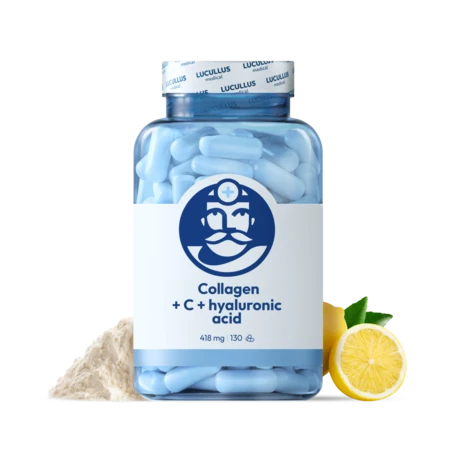
Histamine Control
Histamine is often perceived negatively, especially for its role in allergic reactions and intolerance. As with many things in life, black-and-white thinking is not suitable for this biogenic amine. As a neurotransmitter, it participates in many critical processes. In defending the body, for example, it supports the enlargement of blood vessels, making it easier for immune cells to access the site of inflammation. At the same time, it stimulates the production of gastric juices (essential for food processing), regulates the sleep cycle, controls appetite, and plays a role in learning, memory, and emotions. Histamine naturally occurs in the human body, and its balance is crucial for health. In the digestive system, it's broken down by the enzyme diamine oxidase. However, if histamine intake is greater than the body can break down, histamine intolerance develops. This imbalance can be caused by stress, poor lifestyle, medicines, or other factors. Excess histamine can lead to unpleasant symptoms, often resembling food allergies or digestive issues. It's essential to understand histamine as an important helper in our body.

Women's balance important for every woman
We can probably agree that the female body and its hormonal balance are far more complicated than the male body. In addition to other factors, a woman's monthly cycle significantly affects her. Therefore, it is much more important to monitor all the necessary substances and hormones if a woman wants to live a balanced, satisfied life, whether in terms of health or mental well-being.

Iron - the Elixir of Youth
Anyone who admires the muscular Arnold Schwarzenegger has surely seen the documentary Pumping Iron about his complex transformation from a skinny teenager to an absolute physical Olympian. His musculature is still admirable today. And it was ordinary iron that helped him achieve it. Of course, it's a joke; he mainly lifted iron. However, to make his muscles look like Hercules', he needed iron in a completely different form.

Innovative LIPO C (Liposomal Vitamin C)
Vitamin C (ascorbic acid) has long been recognized for its ability to enhance immune function and reduce the severity and duration of colds and flu. That vitamin C is essential for optimal immune system functioning and overall health is well known. This is evidenced by the fact that vitamin C is one of the most popular and widely used dietary supplements worldwide. The low content of this vitamin in processed foods requires its regular replenishment. In addition to boosting immunity and shortening the duration of colds, it plays an important role in wound healing, brain function improvement, and bone strength support.

B-complex
From childhood, I remember the word "békomplex" very well and I basically never knew what it was. For younger generations, the word might recall drum&bass, as B-Complex is the stage name of Slovak DJ and producer Matúš Lenický (hit Beautiful Lies). If we are strictly scientific, then B complex is a group of vitamins B1 to B12.

What is in the heart of Dr. Lucullus Multivitamin
Immune support that contains the necessary vitamins and minerals in a daily dose. The weakened immune system deteriorates the quality of life by not being able to resist infections. The first symptoms of a weakened immune system may already be that you get infected at every opportunity, or frequently repeated use of antibiotics, increased fatigue, urinary tract infections, skin problems, headaches, and many others. Regular consumption of 15 vitamins/minerals in the multivitamin complex 𝒟𝓇. 𝐿𝓊𝒸𝓊𝓁𝓁𝓊𝓈 ensures everything your body needs, creates a shield for your health and well-being.






























